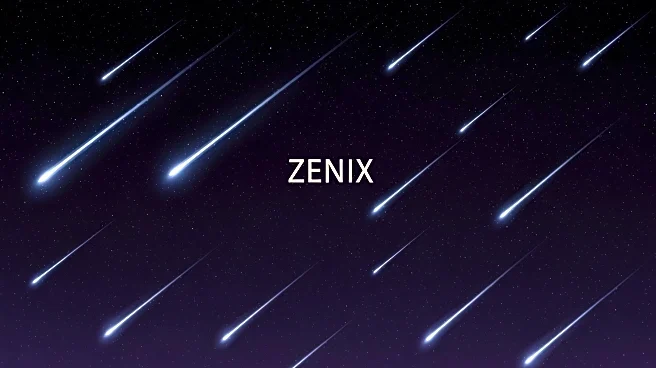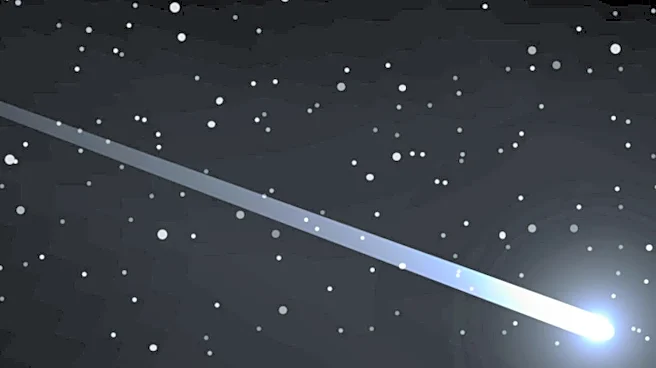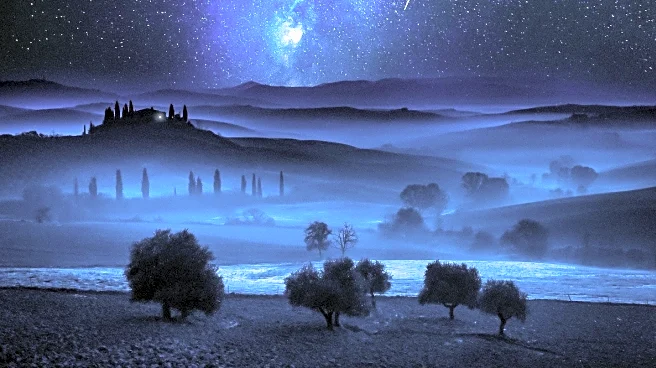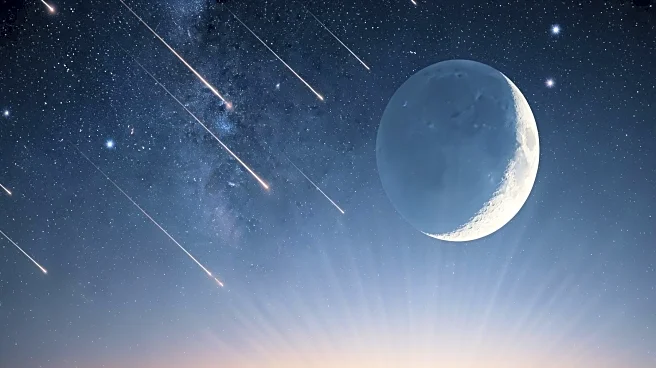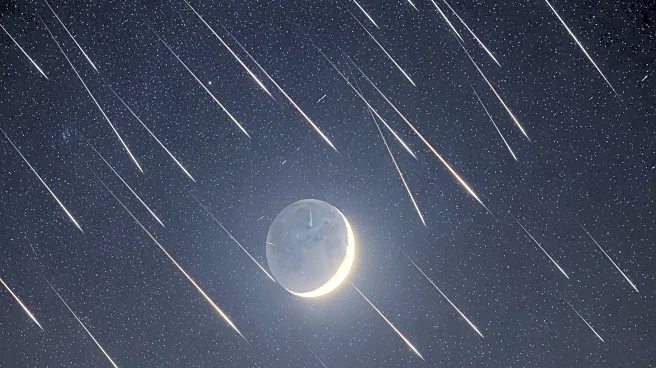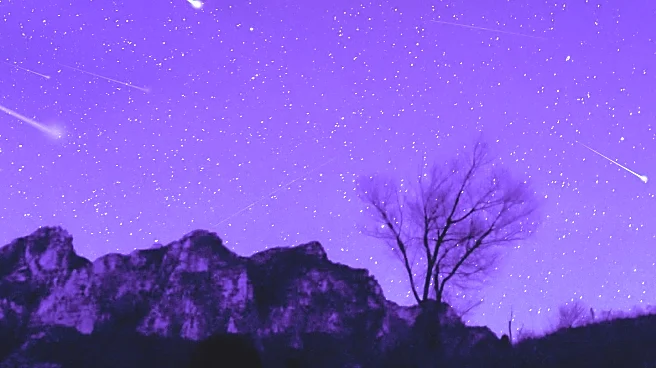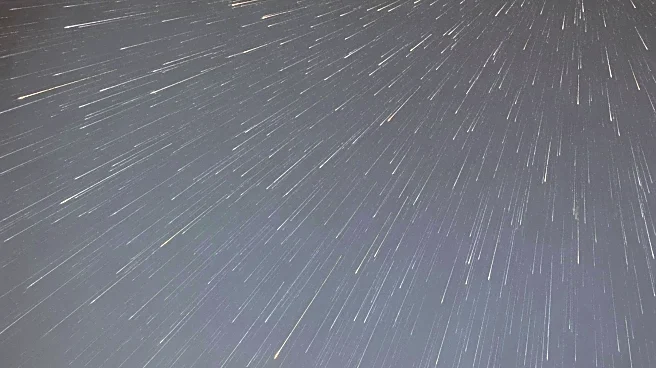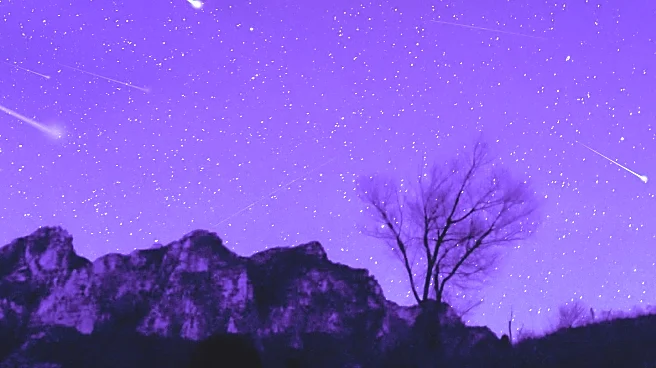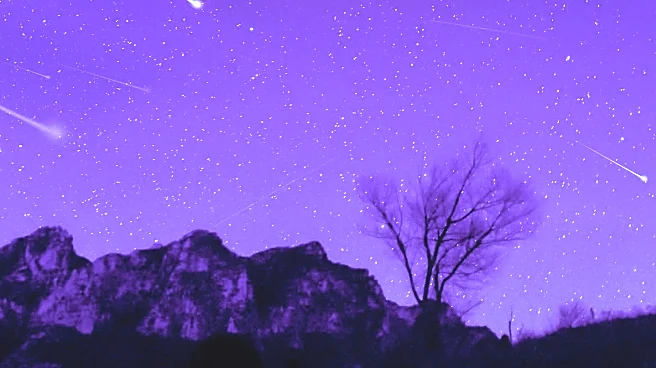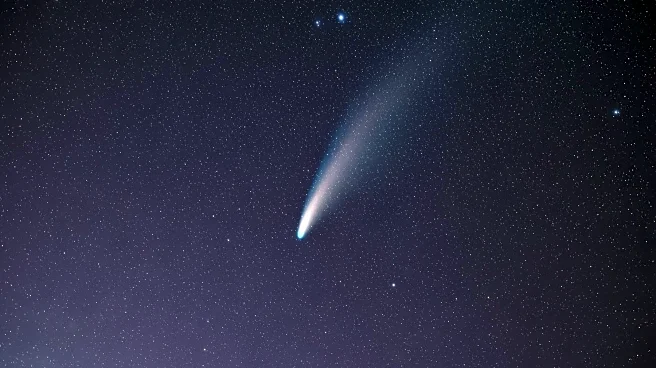What's Happening?
The Orionid meteor shower, active from October 2 to November 7, is reaching its peak between October 21 and 23. This annual event occurs as Earth passes through the debris left by Halley's Comet. During
the peak, observers can expect to see up to 20 meteors per hour, traveling at speeds of up to 148,000 mph. The best viewing times are from 1 a.m. until dawn, and stargazers are advised to find open areas with clear skies for optimal observation.
Why It's Important?
The Orionid meteor shower provides a unique opportunity for the public to engage with astronomy and witness the remnants of one of the most famous comets, Halley's Comet. This event not only captivates amateur astronomers but also serves as an educational moment, highlighting the dynamic nature of our solar system. The meteor shower's visibility encourages interest in space science and can inspire educational programs and community events centered around astronomy.
What's Next?
Following the Orionid meteor shower, several other meteor showers are expected to occur, including the Southern Taurids and Northern Taurids in early November, and the Leonids later in the month. These events offer continued opportunities for observation and engagement with celestial phenomena. Additionally, two full supermoons are anticipated before the end of the year, providing further interest for sky watchers.
Beyond the Headlines
Meteor showers like the Orionids highlight the importance of preserving natural night skies, as light pollution can significantly hinder viewing experiences. Efforts to reduce light pollution are crucial for maintaining the ability to observe such events. Furthermore, the cultural significance of meteor showers, often associated with wishes and folklore, adds a layer of human interest and tradition to these astronomical occurrences.
